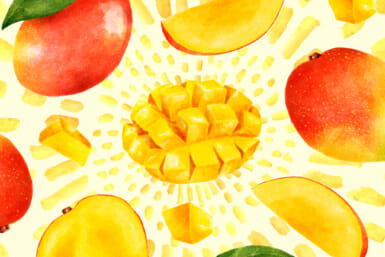Thor Larsen’s letter in The Weekender Mailbox this week is very interesting — interesting to the point of amazement. If what he says is true, and I’m sure his information comes from a good source, it’s the first time I’ve heard of three-year-old vines producing drinkable wine.
If the Stag’s Leap Cabernet Sauvignon he refers to was made from immature vines, some laboratory magic must have been used. To make a great wine from the first grapes of a vine, and the Stag’s Leap Cabernet Sauvignon is considered a great wine, is an impossibility without the help of a chemist. For the grapes that a three-year-old vine produces are small and deficient in sugar.
I don’t have enough information on Stag’s Leap to challenge Larsen’s authority, though I understand it has no vineyard of its own. It buys grapes by contract. If what I understand is correct, did Stag’s Leap make it a point to buy its grapes from such young vines or was it by accident that it got those grapes? I wish Larsen had given more details in support of his statement.
For it’s hard for me to overlook such an authority as Zelma Long, a noted California oenologist, who wrote in The University of California Wine Book (The University of California Press, 1984): “… Since vines take three years to produce the first crop and five to seven years to produce a full, mature crop, he (the vineyard owner) is forced to forecast market needs that many years ahead…”
Nor can I ignore books like The Science and Technique of Wine by Lionel Franklin (Patrick Stephens Ltd., Cambridge, 1965), which agrees in general with Ms. Long but gives more specific data. The Science and Technique of Wine is the standard textbook for all students following Wine Trade Education courses in the United Kingdom and studying for the Masters of Wine Diploma. It gives this summary of vine production:
1st to 3rd year — Nil.
3rd to 5th year — Small quantity; poor quality.
5th to 7th year — Large quantity; medium quality.
8th to 15th year — Large quantity; good quality.
15th to 25th year — Medium quantity; good quality.
25th to 40th year — Small quantity; good quality.
After 40th year — Small quantity; poor quality.
I’m sure Ms. Long and Mr. Franklin would be as surprised as I to find out that Stag’s Leap produced a full normal crop of what had to be good quality grapes from three-year-old vines. Could the vine have been T-budded? T-budding is another method of grafting, but the graft is made on mature roots. That may be the answer to Larsen’s oenological conundrum.
Why does it take so long for a vine to produce a mature crop? Because the roots are still growing. Depending on the soil and other factors, the roots grow for up to seven or eight years: then they begin to thicken. To liken the process to human growth, the vine reaches puberty at three and, depending on the vigor or precocity of the vine, becomes mature in four to seven years.
Frankly, I don’t know what they do with the grapes from vines fruiting for the first time, but I do know that great vineyards and those pretending to greatness would never use them in their major product, except, it seems, Stag’s Leap. I myself have never tried eating a grape from a three-year-old vine, but I’m told such grapes are pretty sour.
I am well aware of the controversial wine-tasting that took place in Paris in 1976, The French are still sizzling over it, the British are still laughing at it and the Americans are still bragging about it. Yes I know that Stag’s Leap Cabernet Sauvignon won the blind-tasting sweepstakes and I also know that French wine personalities, not connoisseurs, were on the panel of judges. I know one of those personalities. He talked more than he knew about wine. What he didn’t know about wine, he made up in jargon.
He compares unfavorably with a real French connoisseur of my acquaintance. A member of the French Government’s Appellation Controllee Committee, he was invited to be a member of the panel but refused. In explaining to me why he declined, he said that wasn’t going to get caught “in that trap.”
“In such a blind-tasting, you can never be right,” he told me. “If I were asked to rate several Pommards, for example, I would accept. That’s part of my job. But to judge blind several different kinds of wine is an oenological ‘Pin the Tail on the Donkey’ game.” His attitude is shared by other wine connoisseurs I know.
Why are the British still laughing? Because a group of so-called French experts let themselves get snared into a no-win situation. Why are the Americans still bragging? Because it gave world-class status to California wines. Why are the French still sizzling? The reason is obvious.
Actually, one thing of value did come out of that lasting. The publicity after the event gave California wines the recognition they deserved.








